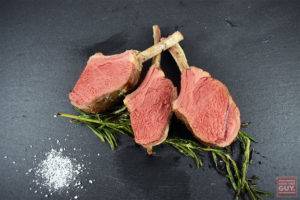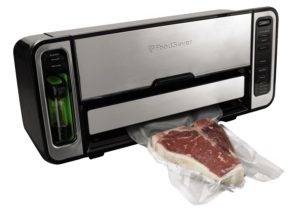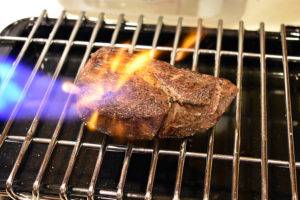Sous Vide: How Does it Work?
As sous vide takes the world by storm a lot of people are left wondering how exactly sous vide works.
Today sous vide is no longer the sole domain of celebrity chefs and high-end restaurants.
Like a lot of things, Sous vide took a while to get to where it is today. The first description of a sous vide-esq cooking technique was in 1799. Benjamin Thompson, an American physicist, used a machine he’d invented to dry potatoes to cook meat instead. The results were, to quote, “perfectly done, and most singularly well-tasted.”
But it was only after vacuum sealing became popular in the 1960s that chefs began to experiment.
Almost sixty years later and sous vide is used to get stunning results with meat, fish, and vegetables. Here are the four top reasons to cook with sous vide.
Sous vide uses the precise application of low heat through water to cook food perfectly evenly.
We’ve already talked about where beginners should start. If you’re looking for the practical basics that article is a good place to start.
One of the biggest advantages of sous vide is complete, 360 degree, submersion.
Poaching something results in the heat being transferred from the element, to the pan, to the liquid partially submerging the food, then to the food itself. With sous vide whatever you’re cooking is completely surrounded by carefully temperature controlled water. This means it’s much, much easier to get that perfect degree of doneness.
Vacuum sealing locks in the foods key aromas and keeps it moist throughout cooking.
People rest meat to give it a chance to reabsorb flavour after cooking. With sous vide you don’t need to wait. All that flavour is locked in thanks to airtight sealing.
Although you can technically use ziplock bags to sous vide these are notoriously difficult to get all the air out of. With sous vide, air in your cooking bag is bad. It means that the food has a risk of floating instead of sinking and therefore cooking unevenly.
Sous vide also lets you lock in marinades without losing an ounce of flavour.
Vaccuum sealing meat of veg with a marinade means that less flavour is evaporated. Pretty much everything is reabsorbed into the meal. There are some people who recommend that you limit your seasoning to just salt and pepper, but like with anything kitchen related it really come down to preference.
Now let’s talk about heat.
The real beauty behind sous vide is actually how vacuum sealing allows for the precise application of gentle heat.
Slow cooking has been around for hundreds of years in different forms. If you add raw meat to a too hot pan it tenses up, the muscle fibers contract and you’re left with something tough.
Taking it slow stops this from happening. It also lets the fat emulsify, or become soft and succulent, which leads to tender, more flavourful meat.
Sous vide is actually so accurate that, and here comes the science, it can stop the cell walls in food from bursting.
This means that that tough connective tissue I was talking about earlier actually becomes melt-in-your-mouth succulent instead of chewy.
Then, if you want, you can finish the meat in a pan at a very, very high temperature. But act fast! You don’t want the meat to overcook. You just want to form a nice crust on your steak, chicken, or pork.
The same applies to vegetables. Because of the fine temperature sous vide allow you can actually cook vegetables below the boiling point of water which results in thoroughly cooked veg that still has a bit of a crunch.



